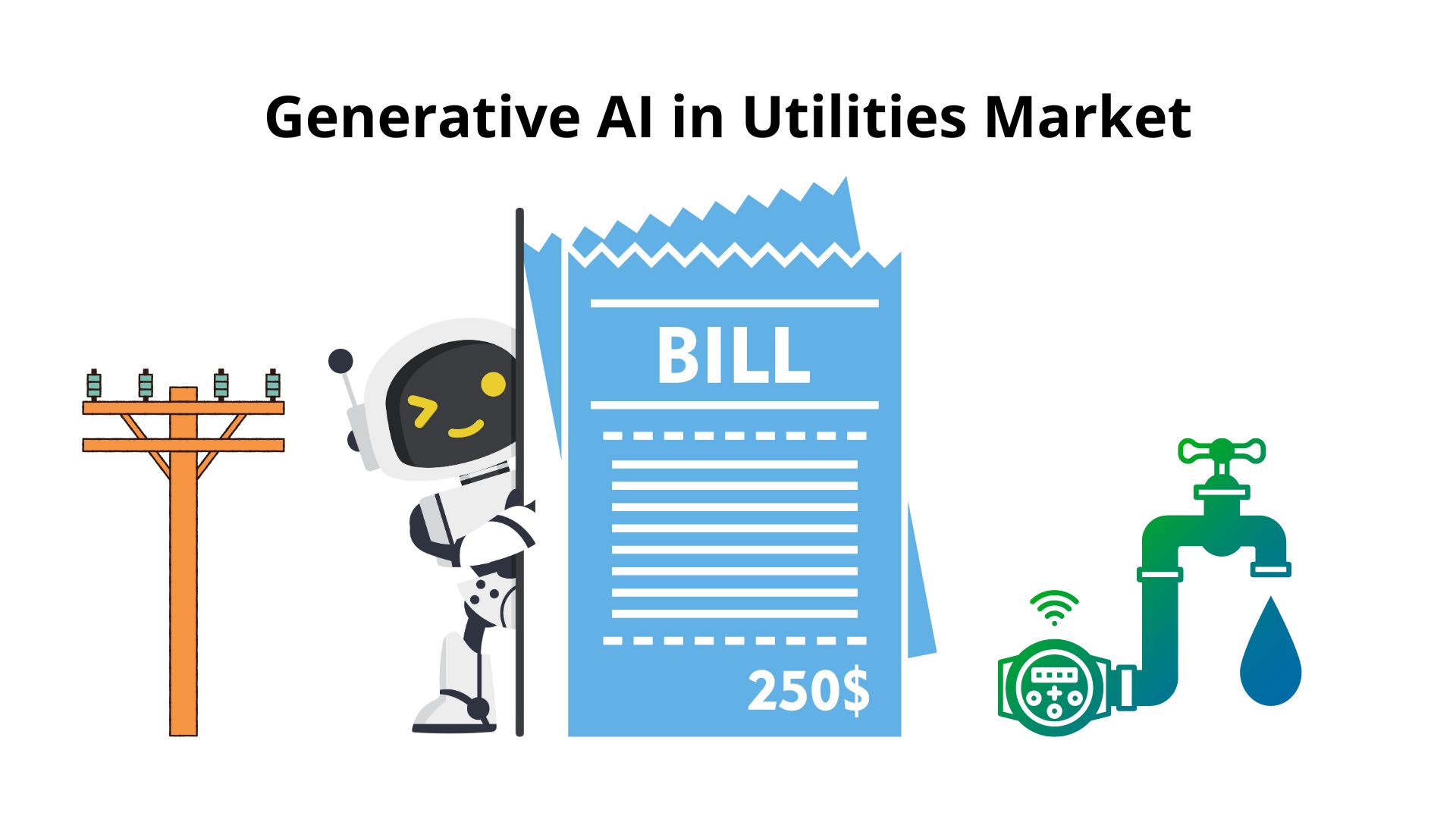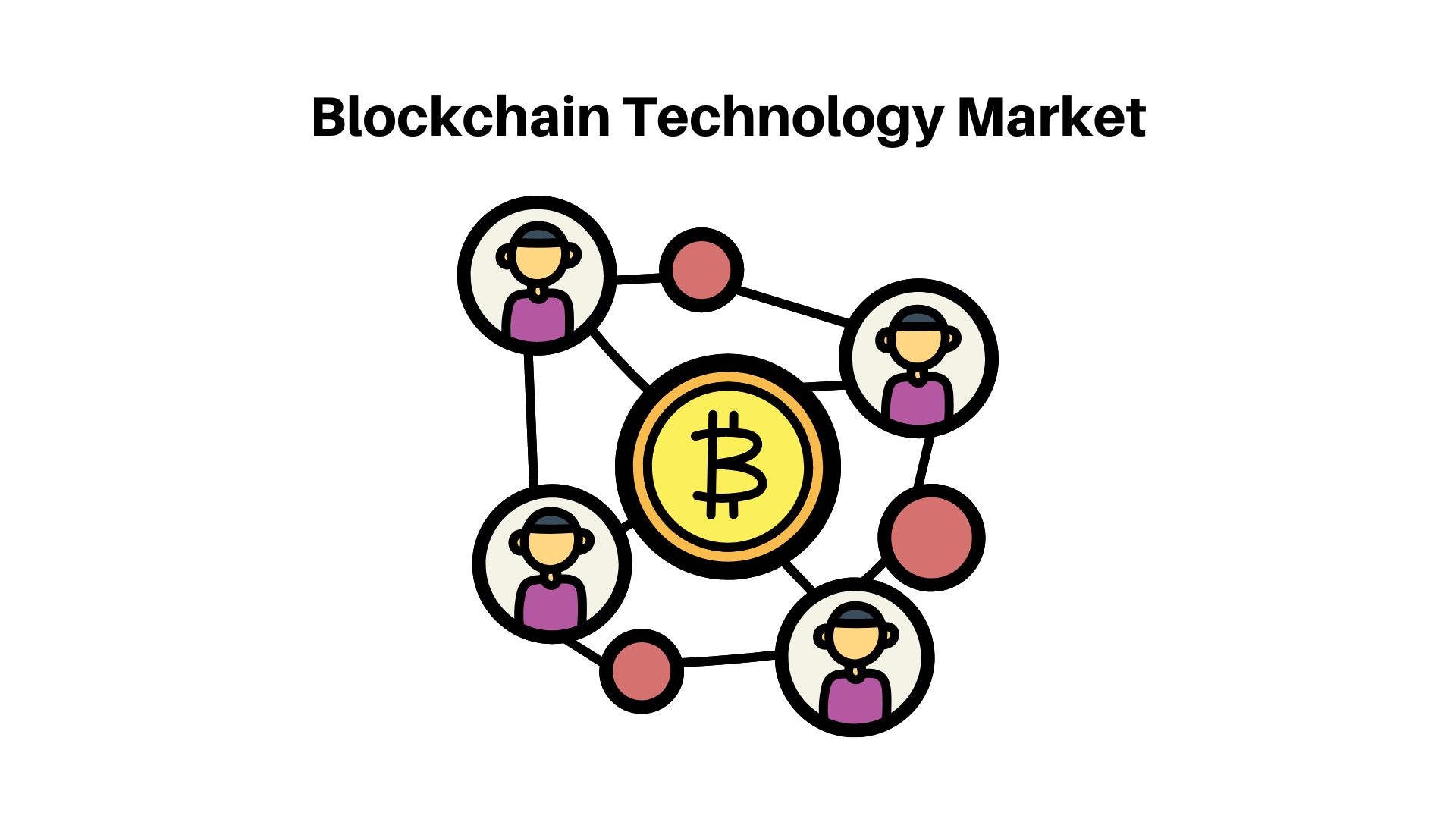Generative AI in Utilities Market is estimated to be USD 8676 Mn by 2032 with a CAGR of 33.1%

Page Contents
Market Overview
Published Via 11Press : Generative AI in Utilities Market size is expected to be worth around USD 8676 Mn by 2032 from USD 534 Mn in 2022, growing at a CAGR of 33.1% during the forecast period from 2022 to 2032.
Generative AI has made strides across industries, and utilities is no exception. Utilities cover everything from electricity and water services to gas utilities and waste disposal. Integrating generative AI technologies could revolutionize operations while optimizing resource allocation, improving customer experiences and driving innovation in this market.
Predictive maintenance is one key use case of generative AI in the utilities market. By analyzing large amounts of sensor and monitoring system data collected by sensors and AI algorithms, they can detect patterns or anomalies which indicate potential equipment failure or maintenance needs – this proactive approach enables utility companies to address potential issues before they escalate, thus minimizing downtime and cutting operational costs.
Energy optimization is another area where generative AI is making waves. With the increasing adoption of renewable energy sources and need to balance supply and demand, generative AI algorithms are providing valuable insight to optimize energy generation and distribution; weather forecasts, historical consumption patterns and grid conditions can all be utilized by these algorithms in optimizing energy generation and distribution – not only improving efficiency but also helping reduce carbon emissions while furthering sustainability efforts.
Generative AI plays an integral part in customer engagement and experience in the utility market. By employing natural language processing and machine learning techniques, utility companies can develop intelligent chatbots or virtual assistants to interact with customers, address their inquiries and make personalized recommendations – thus increasing customer satisfaction, streamlining support services, and providing self-service options.
Generative AI also empowers utilities companies to find innovative solutions for grid management and demand response, by applying advanced analytics and optimization techniques. Generative AI algorithms are capable of analyzing complex data sets, recognizing consumption patterns, developing models for forecasting demand forecasting, load balancing or load forecasting and creating models to balance grid loads more efficiently and reliably allowing utilities to make informed decisions that adapt to changing demand patterns while creating more efficient grids that deliver greater reliability for all of its consumers.
Request Sample Copy of Generative AI in Utilities Market Report at: https://marketresearch.biz/report/generative-ai-in-utilities-market/request-sample

Key Takeaways
- Generative AI provides predictive maintenance solutions in the utilities market to minimize downtime and operational expenses.
- Energy optimization powered by generative AI helps utilities companies balance supply and demand, improving efficiency while supporting sustainability initiatives.
- Generative AI helps strengthen customer engagement by creating intelligent chatbots and virtual assistants to provide tailored support and recommendations.
- Utilities companies can leverage generative AI to manage grids and implement demand response strategies, responding to shifting consumption patterns.
- Generative AI provides utilities with the means to make data-driven decisions, optimize asset management, and enhance cybersecurity measures.
- Integrating Generative AI into the utilities market drives innovation and promotes decentralized energy systems.
- Generative AI assists utilities companies by analyzing large datasets to detect anomalies, optimize resource allocation and enhance operational performance.
- Utilising generative AI in the utilities sector leads to more sustainable, efficient, and customer-centric operations; benefiting both industry participants and consumers.
Regional Snapshot
North America boasts a well-developed utilities market with advanced infrastructure and high electricity consumption rates. North America is at the forefront of adopting and developing AI solutions in utilities applications for grid optimization, demand response management, customer engagement purposes as well as customer retention purposes – with tech giants like IBM as well as innovative startups such as GenAI contributing solutions into these fields of endeavor.
Europe is well known for its dedication to renewable energy and sustainable practices. Generative AI has become an invaluable asset in European utilities companies' operations for optimizing generation and distribution, increasing grid stability, improving energy efficiency, engaging customers through customized services and intelligent energy management systems, as well as engaging customers through personalized services and intelligent energy management systems.
Asia-Pacific region is experiencing rapid urbanization and rising energy demands, and Generative AI plays a significant role in managing them by optimizing grid operations, supporting demand response services efficiently, and helping integrate renewable sources. Asian utilities have taken advantage of Generative AI's ability to optimize grid operations while supporting demand response services efficiently as well as integrating renewable sources.
Latin America's utilities market is currently experiencing a transformative revolution due to the adoption of renewable energy and grid modernization initiatives. Generative AI solutions such as this one are now being employed to optimize energy networks, enhance operational efficiencies and provide superior customer services; Latin American utilities have taken advantage of such solutions to meet challenges associated with energy access, affordability and sustainability.
Middle East and Africa face numerous utility sector challenges related to energy access, infrastructure development and water scarcity. Generative AI technologies are being deployed in order to optimize energy management, water distribution systems and resource allocation more efficiently – as well as renewable energy projects like solar or wind farms utilizing AI applications.
For any inquiries, Speak to our expert at: https://marketresearch.biz/report/generative-ai-in-utilities-market/#inquiry
Drivers
Data-Driven Decision Making
The utilities market generates vast amounts of data pertaining to energy consumption, grid performance and customer behavior. Generative AI algorithms can utilize this data to gain valuable insights that drive data-driven decision making processes for utility companies – helping optimize energy generation, distribution and pricing strategies and offer superior customer experiences while streamlining operations more efficiently.
Grid Optimization and Resilience
Renewable energy sources, energy storage systems and smart devices have transformed the electricity grid into a complex system, necessitating it to become increasingly sophisticated and integrated. Generative AI algorithms can assist in optimizing its performance by anticipating demand, identifying potential failures and improving power flow optimization. They can simulate various scenarios to assess their effects on resilience and reliability of grid operations.
Energy Efficiency and Demand Response.
Generative AI can play an essential part in energy efficiency and demand response initiatives, by analyzing consumption patterns, weather data, building characteristics, and pricing mechanisms to create personalized energy-saving recommendations for customers. Furthermore, dynamic pricing mechanisms enable dynamic pricing mechanisms and predict peak demand periods, encouraging people to switch their usage away from peak times thus decreasing strain on the grid.
Customer Engagement and Experience.
Utilities have increasingly focused on improving customer engagement and experience, and Generative AI can play an integral role in this effort by analyzing customer data such as energy consumption, billing history, demographic information and lifestyle habits to generate personalized insights and recommendations that help customers better understand their energy use while also finding opportunities for cost savings and adopting sustainable behaviors. Furthermore, Generative AI allows virtual assistants or chatbots that provide instantaneous support and enhance overall customer experiences.
Restraints
Data Privacy and Security Concerns
Utilities companies collect large volumes of sensitive customer data such as personal details and energy consumption patterns that must be analysed when implementing generative AI solutions, raising concerns over unauthorized access, data breaches and misuse.
Regulatory and Compliance Issues
The utilities market is heavily regulated, making the addition of generative AI technologies an additional complexity to compliance requirements. There may be specific rules and guidelines regarding data handling, algorithm transparency, and fair decision-making processes; adhering to all these regulations while using AI can be particularly difficult when technology advances faster than regulatory frameworks do.
Lack of Skilled Workforce
Implementing Generative AI successfully in the utilities market requires an expert workforce that possesses both AI knowledge and domain experience in this sector. Unfortunately, however, professionals possessing this expertise are rare within this industry, making acquiring and retaining these specialists difficult, restricting its widespread adoption by industry professionals.
Cost and Return on Investment
Implementing AI solutions into utilities market often entails significant upfront costs, from developing and training AI models, implementing infrastructure changes, and integrating AI systems with existing workflows to ongoing maintenance costs, updates and data storage costs – not to mention return on investment (ROI) calculations that may take time due to not immediately tangible benefits such as operational efficiencies gains or improved customer experiences.
Opportunities
Predictive Maintenance
Generative AI provides utilities infrastructure with predictive maintenance models. By analyzing historical maintenance records, sensor data and equipment performance indicators, generative AI algorithms can forecast when maintenance will be needed, identify potential failures and optimize maintenance schedules – helping reduce downtime while cutting operational costs while increasing lifespan of critical infrastructure components.
Renewable Energy Integration Solutions
The utilities market is currently experiencing a shift toward increased renewable energy integration, and Generative AI can assist this change by optimizing deployment and operation of renewable assets. By analyzing weather patterns, energy generation data, grid conditions and forecasting methods generative AI models can predict renewable generation forecasting to help utility companies manage intermittency of renewable sources for grid stability improvement and maximize renewable utilization.
Energy Portfolio Optimization was implemented
Utility companies frequently manage complex energy portfolios made up of various generation sources, such as fossil fuels, renewables, and storage systems. Generative AI can assist these utilities with optimizing these portfolios by taking into account factors like energy prices, regulatory restrictions and environmental impacts; simulating different scenarios and producing optimal strategies can assist utility companies with making informed decisions about procurement, generation and storage resulting in cost savings and an increasingly sustainable energy mix.
Fraud Detection and Cybersecurity
As utilities become increasingly digitalized, their risk of fraud and cybersecurity threats increases accordingly. Generative AI plays an essential role in detecting anomalies and potential security breaches by analyzing large volumes of data in real time. Generative AI algorithms can detect suspicious patterns, unauthorised access attempts and anomalous energy usage enabling utility companies to take proactive steps against fraud as well as safeguard critical infrastructure from cyber threats.
Take a look at the PDF sample of this report: https://marketresearch.biz/report/generative-ai-in-utilities-market/request-sample
Challenges
Limited Availability of High-Quality Training Data
Generative AI models require large amounts of high-quality training data in order to understand how they operate and produce accurate outputs. Acquiring this data may prove challenging in the utilities sector due to privacy restrictions and restricted access to diverse and comprehensive datasets. Collecting representative samples that capture energy systems, customer behaviors, and environmental considerations may take considerable time and money; successfully overcoming such hurdles and guaranteeing access to reliable training data are essential steps toward the successful deployment of generative AI in utilities markets.
Ethical and Fair Use of AI-Generated Outputs
Generative AI systems offer utilities companies an opportunity to use AI systems to influence decision-making processes in areas like load forecasting, energy optimization or demand response. But ethical and fair use of the outputs generated by such AI is difficult as biases present in training data can become apparent in generated outputs resulting in discriminatory or unfair results. Utilities companies must implement robust measures to detect and mitigate biases present in training data that might propagate into their decisions made using these AI-generated outputs as well as ensure transparency during AI decision-making practices as well as accountability mechanisms in case unintended results occur.
Explainability and Interpretability of AI Models
Generative AI models such as deep neural networks can often be perceived as opaque black boxes, making their decision-making processes hard to interpret and comprehend. In the utilities market, where trust-building and explaining reasoning behind AI generated recommendations or predictions are key components of success, this poses a significant challenge. Therefore, developing techniques to explain and interpret outputs of generative AI models for complex energy systems remains an ongoing research area; meeting this hurdle is paramount to gaining acceptance and trust among stakeholders, regulators and customers.
Existing Infrastructure and Workflows Integration
Utilities companies tend to operate with legacy systems and infrastructure not intended to accommodate generative AI technologies, making integration difficult and time consuming. Maintaining compatibility and interoperability between AI systems and their legacy infrastructure requires careful planning, coordination, and often system upgrades – challenges utilities companies must overcome to maximize the full potential of generative AI in improving operational efficiencies and decision-making capabilities.
Market Segmentation
Based on Type
- Electricity Generation
- Transmission & Distribution
- Water & Wastewater Management
- Gas & Oil Utilities
- Renewable Energy Integration
- Customer Engagement & Energy Efficiency
Based on Application
- Create Personalized Customer Experiences
- Improve Asset Management
- Develop New Products & Services
- Improve Safety
- Other
Based on Deployment
- On-Premises
- Cloud-Based
- Hybrid
- Edge Computing
- Collaborative
- Customized In-House
Key Players
- Siemens AG
- General Electric Company
- ABB Ltd.
- Schneider Electric SE
- IBM Corporation
- Microsoft Corporation
- Other
Report Scope
| Report Attribute | Details |
| Market size value in 2022 | USD 534 Mn |
| Revenue Forecast by 2032 | USD 8676 Mn |
| Growth Rate | CAGR Of 33.1% |
| Regions Covered | North America, Europe, Asia Pacific, Latin America, and Middle East & Africa, and Rest of the World |
| Historical Years | 2017-2022 |
| Base Year | 2022 |
| Estimated Year | 2023 |
| Short-Term Projection Year | 2028 |
| Long-Term Projected Year | 2032 |
Request Customization Of The Report: https://marketresearch.biz/report/generative-ai-in-utilities-market/#request-for-customization
Recent Developments
- In 2022, Siemens unveiled MIn dsphere Utilities, its generative AI-powered platform designed to aid utilities companies improve efficiency, reliability and sustaIn ability.
- In 2022, Italian energy provider Enel has announced a partnership with IBM to develop a generative AI-powered platform to manage their power grid efficiently and reliably. The platform will help Enel improve both efficiency and reliability.
- In 2023, Duke Energy, an American energy provider, recently entered In to a partnership with Google AI to create a generative AI-powered platform to predict energy demand and help better manage resources while cuttIn g costs.
- In 2023, Oak Ridge National Laboratory, a government-funded research In stitute located In Tennessee, announced a generative AI platform designed to simulate power grid performance. The platform can help utilities companies test new technologies and strategies before deployIn g them In real life.
- In 2023, National Grid, a British energy company, announced a new partnership with DeepMIn d to develop an AI-powered platform for managIn g their energy network. The goal is to enhance both its efficiency and reliability.
FAQ
1. What is Generative AI in the Utility Market?
A. Generative AI refers to the application of artificial intelligence algorithms to generate new solutions, ideas or outputs. When applied in the utility market, generative AI can help optimize energy distribution, enhance demand forecasting capabilities and manage grid resources more efficiently while developing renewable energy solutions.
2. How is Generative Artificial Intelligence beneficial to the utilities market?
A. Generative AI offers utilities market several benefits. It can optimize energy production and distribution, reduce operational costs, improve grid reliability and resilience, strengthen demand response capabilities and help integrate renewable energy sources more efficiently into the grid.
3. What are some specific applications of generative AI in the utilities sector?
A. Specific applications of generative AI for utilities markets include optimizing power plant operations, predicting equipment failures and maintenance needs, managing energy storage systems efficiently, simulating grid performance optimization models and developing intelligent energy management systems for buildings.
4. How does generative AI enhance energy demand forecasting?
A. Generative AI can analyze historical energy consumption data, weather patterns, customer behaviors and other relevant factors to produce accurate energy demand forecasts. By increasing accuracy of demand forecasts, utilities can optimize their energy generation and distribution strategies and minimize waste for more effective resource allocation.
5. Can generative AI assist utilities in integrating renewable energy sources into the grid?
A. Yes, generative AI is an invaluable asset when it comes to integrating renewable energy sources into the grid. By analyzing data from various sources – weather patterns, solar irradiation levels, wind speeds and demand – generative AI can optimize utilization of renewable resources while helping with grid management by anticipating intermittent renewable generation and adapting operations accordingly.
6. Are there any obstacles or restrictions associated with using generative AI in the utilities market?
A. Generative AI holds great promise for the utilities market, yet also presents unique challenges. These may include limited data availability or quality issues; data privacy/security considerations; regulatory complexities and the need for skilled AI professionals to develop and maintain these systems; as well as their black-box nature making it hard to explain their reasoning behind decisions made.
7. What are the prospects for Generative AI in the utilities market?
A. Future prospects of generative AI in the utilities market look bright. As renewable energy sources become more prominent and the need for efficient energy management increases, generative AI is likely to play an essential role in optimizing energy systems. Furthermore, advances in data availability, computing power and AI algorithms will further bolster its capabilities for intelligent and sustainable utility operations.
Contact us
Contact Person: Mr. Lawrence John
Marketresearch.Biz
Tel: +1 (347) 796-4335
Send Email: [email protected]
Content has been published via 11press. for more details please contact at [email protected]
The team behind market.us, marketresearch.biz, market.biz and more. Our purpose is to keep our customers ahead of the game with regard to the markets. They may fluctuate up or down, but we will help you to stay ahead of the curve in these market fluctuations. Our consistent growth and ability to deliver in-depth analyses and market insight has engaged genuine market players. They have faith in us to offer the data and information they require to make balanced and decisive marketing decisions.



